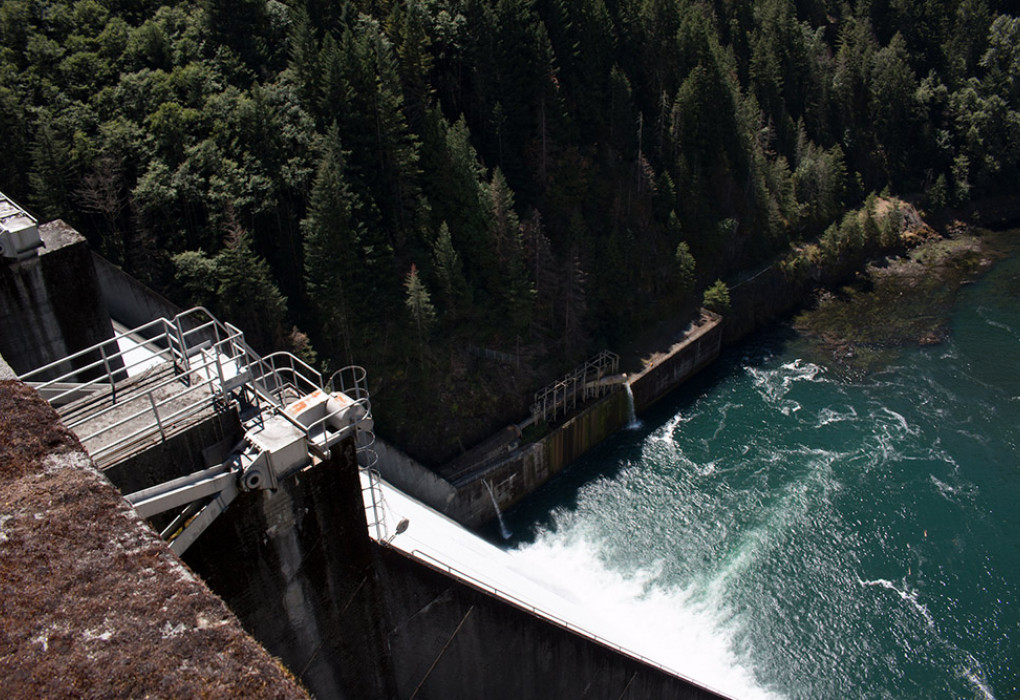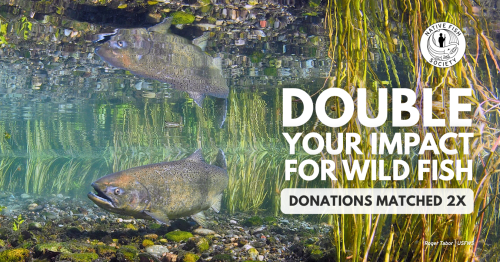ON THE BRINK
Coalition takes Army Corps to court over the future of the Willamette's anadromous fish
The Willamette Valley is the most populous watershed in the state, home to about 70 percent of Oregonians. Historically, it was also home to hundreds of thousands of anadromous fish that ascended Willamette Falls each year. But as a result of industrial, urban, and agricultural development, as well as poor fishery management, native fish populations in the Willamette basin have declined steadily as the human population has grown.
While the bulk of spring Chinook and winter steelhead were lost over a century ago, the Army Corps of Engineers delivered a punishing blow in the middle of the 20th century by building 13 dams throughout the Willamette basin. At a time when anadromous fish desperately needed relief from decades of pollution, habitat destruction, and hatchery influence, the dams cut these fish off from most of the quality spawning and rearing habitat that was left. To make up for it, the Army Corps put five hatcheries into production that temporarily satiated sport anglers, but further degraded the genetic integrity of the wild fish. By 2005, the dead-end strategy advanced by the Army Corps of Engineers and the Oregon Department of Fish and Wildlife had driven Willamette spring Chinook onto the growing list of salmonids protected by the Endangered Species Act. Willamette winter steelhead joined them the very next year. As 2017 comes to a close, the effect of a decade of protections under the Endangered Species Act is functionally nil; both spring Chinook and winter steelhead are on the brink of extinction.
Following the Endangered Species Act listings, the National Marine Fisheries Service drafted a formal Biological Opinion that proposed a series of actions and deadlines. But in the nine years since the National Marine Fisheries Service issued the BiOp, the Army Corps has failed to implement many of the most important measures. Officials claim the Army Corps spent $194 million to improve habitat and fish passage on the North Santiam, South Santiam, McKenzie and Middle Fork Willamette rivers. But most of that money has gone toward non-volitional fish passage, like trapping and trucking adult fish around dams, which fails to address the root of the problem.
A decade of steady decline, coupled with the stresses of climate change, suggest that if the status quo is not disrupted the downward trend will continue. State officials have, in part, blamed sea lions and cormorants for the dwindling returns. Though predation does have an impact, the root problem is a century of mismanagement. In 2017, Willamette winter steelhead returns were the lowest in recorded history, suddenly in a position for predators to have an outsized effect on their survival. Still, the department refuses to take responsibility for the burden its hatchery programs place on native fish. This year, the Oregon Department of Fish and Wildlife sounded the alarm when sea lions took an estimated 20 percent of the winter steelhead run, going so far as to suggest that sea lions could drive Willamette winter steelhead extinct. But in sub-basins like the North Santiam, there is a 27 percent decrease in wild spawning production that can be blamed on the state’s hatchery summer steelhead program.
Throughout the Willamette basin, the Oregon Department of Fish and Wildlife has operated hatcheries for years without approved Hatchery Genetic Management plans. The genetic introgression between hatchery spring Chinook and their wild counterparts consistently exceeds the limit prescribed for basins with stronghold populations. Though the Oregon Department of Fish and Wildlife acknowledges the negative effects, the department continues to put its hatchery programs ahead of the needs of wild fish.
With extinction looming over two iconic runs of fish, the negligence of our governmental agencies has prompted several groups to take action. Most recently, Native Fish Society and our River Stewards in the upper Willamette, Northwest Environmental Defense Center, and WildEarth Guardians - represented by Advocates for the West - are challenging the Army Corps in court for violating the Endangered Species Act. The goals of the suit are a sincere reevaluation of dysfunctional management practices and, ultimately, the adoption of a new plan for the Willamette that prioritizes wild, native fish.
In the short term, the Army Corps can help native fish by increasing their investments in fish habitat and monitoring, improving water quality below their dams, as well as requiring the hatchery programs they fund be permitted through the National Marine Fisheries Service and operated according to the best-available science. Ultimately, trap and haul programs must give way to volitional fish passage. NMFS’s BiOp, which is now almost a decade old, should be revised to provide an updated blueprint for progress. This legal challenge is about accountability. With the proper protections and the right investments, we can bring Willamette winter steelhead and spring Chinook back from the brink.
How you can help. In 2018, we will need you to weigh in on NMFS’s Upper Willamette Hatchery Genetic Management and Downstream Fish Passage plans. Public oversight on the management of hatchery programs and fish passage is crucial to the recovery of threatened spring Chinook and winter steelhead in the upper Willamette.

